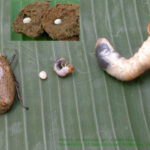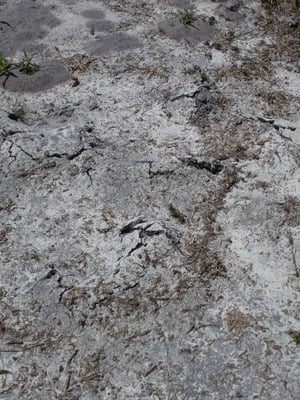Keeping your lawn green and thriving can be a difficult task one that can be made even more problematic if you find that you efforts are being sabotaged by grubs.
White grubs can be a problem for homeowners in many areas of the country and can lead to patchy, brown areas of your lawn. The real trick is in determining if these problem spots are indeed the work of grubs or if they are being caused by other factors such as too much or little sunlight, drought or other types of lawn pests. Typically a lawn infested with white grubs will be characterized by irregular shaped patches where the grass has become discolored and has started to die. The simplest and most effective method for determining if your lawn is infested is to pull up the affected sections and look at the roots. The white grubs are the larval form certain species of beetle and are small, white and worm-like in appearance. If your lawn is being attacked by these grubs you should see them entwined about the roots of the afflicted sod.
It is important to check in this manner for the grubs in an area that shows signs of wilting but that is not yet dead (or hasn’t been dead for long) as the grubs may move from areas where the grass has died into other areas leaving only the dead grass as evidence of their having been there. Checking this way for the grubs weeks or sometimes even days after the patch has died may not yield conclusive evidence as to the cause.
You may also see evidence of an infestation of grubs as damage to your lawn from small animals such as skunks or raccoons who will attempt to dig them up for food. So if you have been noticing both wilted patches of sod as well as nocturnal digging by various animals that is also a good indication that your lawn problems are grub related.
It is also important to note that the beetles which lay the eggs the grubs hatch from tend to choose healthy, green lawns as targets for their offspring and as such you are less likely to find grubs present in shaded or otherwise less healthy lawns, particularly if there are healthier areas of grass available in the neighborhood. Unfortunately, the higher likelihood of beetles and grubs is one of the risks from having a nicer lawn.
How can you prevent this type of damage? The easiest way is to be vigilant and to watch your lawn carefully in the mid to late summer (when these grubs are most active) and examine the roots of any patches at the very first signs of discoloration or wilting. This will give you the best chances for being able to treat your lawn for the grubs before serious damage has been done.
In the end, the best defense is to be aware of your lawn and to watch it daily for signs of change and for most people, that really isn’t too much trouble.



